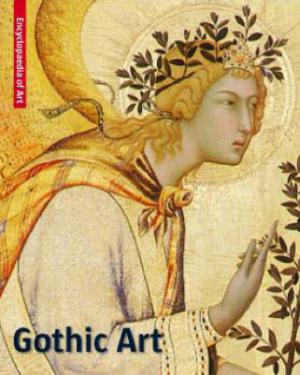
Gothic Art

The Visual Encyclopedia of Art
ISBN 9781566499729 (paperback)
Published in August 2012
The beginnings of Gothic art can be dated toward the middle of the 12th century. Starting from the Ile de France, this artistic movement spread throughout Europe with varying speed and intensity, embracing all fields of artistic endeavor and lasting in some regions until the 16th century. The most obvious architectural developments involved the introduction of the ogival arch, flying buttresses, spires, and galleries that permitted the lightening of walls and the construction of taller buildings. Statuary began to become distinct from architectural decoration, acquiring its own form, and giving rise to free-standing sculpture. The walls of religious buildings began to be adorned with decorated windows, religious fresco cycles, and painted altarpieces to educate the people. These developments accompanied the expansion of the mendicant orders and the systematization of knowledge proposed by scholastic philosophy. Simultaneously, Gothic art spread throughout secular society. Monarchs and the nobility decorated their homes with frescos that celebrated courtly life; they commissioned illuminated prayer books for their private use made with profane decorations. Ideas circulated between artists at major cathedral building sites and by contacts among the royal courts of Europe, and were influenced by historical events such as the conquest of Constantinople in 1204, or the transfer of the papal seat to Avignon in 1309.
This survey ranges from illustrated manuscripts through the great cathedrals of Europe and artists such as Fabriano, Simone Martini, Meister Bertram, Pisanello, Nicola Pisano, and Claus Sluter.
This survey ranges from illustrated manuscripts through the great cathedrals of Europe and artists such as Fabriano, Simone Martini, Meister Bertram, Pisanello, Nicola Pisano, and Claus Sluter.